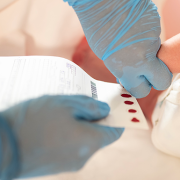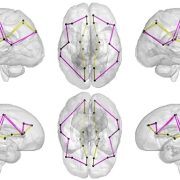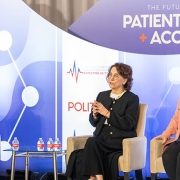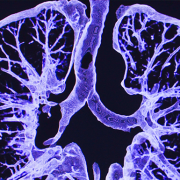Researchers study murky findings in newborn screening panels with $3.7m NIH grant
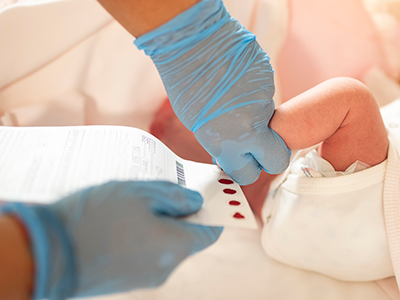
Children’s National received a grant to investigate the impact of newborn screening on families who receive an uncertain prognosis.
The National Institutes of Health (NIH) awarded Children’s National Hospital a $3.7 million grant to investigate the impact of newborn screening on the growing population of families who leave the testing with an uncertain prognosis.
Following the families longitudinally allows for a real-time view of the experiences of these children, sometimes referred to as “patients in waiting.”
Newborn screening is part of a universal, mandatory state health program that helps to identify inherited conditions that can affect a child’s health and survival. Millions of babies are screened annually for genetic, metabolic and endocrine disorders, using a few drops of blood from a prick to the heel; additional tests are done at the bedside such as hearing and heart screening. Sometimes, however, the results create medical odysseys and flag conditions that may never result in symptoms.
“For its first 50 years, newborn screening presented relatively consistent outcomes,” said principal investigator Beth Tarini, M.D., M.S., M.B.A., who serves as the associate director of the Center for Translational Research at Children’s National. “However, in the 21st century, new screening tests have created more ambiguous findings. As a result, we cannot accurately predict what type of symptoms a child may develop, when or if they will develop them, or how severe they will be. This is a lot to ask parents to deal with after the birth of a new child who appears otherwise healthy.”
Why it matters
The uncertainty can take a significant toll on parents by creating fear, anxiety and the medicalization of a child. However, to date, little long-term data exist to inform the care for these children. Ethically, that gap leaves clinicians unsure of how to weigh the benefit and harm of mandatory newborn screening programs. From a policy perspective, the drought of information leads to questions about how best to add disorders to newborn screening panels – an issue that will likely only grow as technology allows us to test for more conditions.
“We have a new group of children growing up and wondering when – or if – they will ever develop signs or symptoms of a disease,” Dr. Tarini said. “For some families, the information is an opportunity. For others, it becomes a burden. We owe it to these families to understand their experience and chart a sensible path forward to help them.”
What’s next
The four-year study will bring together researchers at Children’s National and Case Western University to analyze data and patient interviews from families in Virginia, Iowa and Oregon. The research team will include experts in newborn screening, genetics, health services, genetic counseling, psychology, bioethics and biostatistics.


